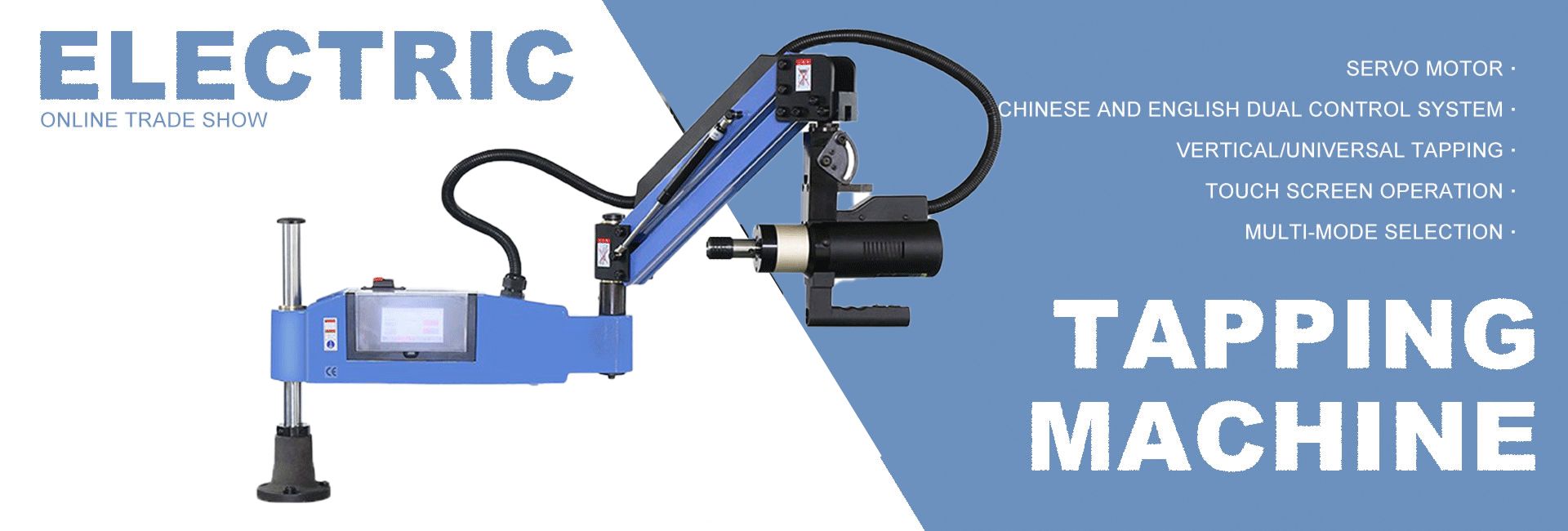Tool wear and the countermeasures
he tool wear is one of the basic proposition in the cutting. Definition and understanding of tool wear, tool manufacturers and users can help extend tool life. In addition, today's tool coating technologies (including new alloying elements) to provide an effective means to further extend tool life, and can significantly increase productivity.
Tool wear mechanism
In metal cutting, heat and friction are manifestations of energy. The heat generated by the high surface load, and the chip along the tool rake face of high speed slip and friction so that the tool in the processing of a challenging environment.
The size of the cutting forces often will fluctuate, mainly depending on the processing conditions (such as hard workpiece material composition, or intermittent cutting). Therefore, in order to maintain its strength in the cutting at high temperatures, requiring the tool to have some basic features, including excellent toughness, wear resistance and high hardness.
Although the tool / workpiece interface at the cutting temperature is almost all the key elements of the tool wear rate, but to determine the values of the parameters needed to calculate the cutting temperature is very difficult. However, the cutting test measurement results can lay the foundation for a number of empirical methods.
Usually can be assumed that the cutting energy is converted to heat, usually 80% of these calories are chip away (the proportion of the change depends on several factors - especially cutting speed). The remaining approximately 20% of the heat the incoming tool. Even in the cutting hardness of steel is not too high, the temperature of the tool may also be more than 550 ℃, which is able to withstand high-speed steel in hardness is not reduced under the premise of maximum temperature. Hardened steel using polycrystalline cubic boron nitride (PCBN) cutting tool, cutting tool and chip temperature is usually more than 1000 ℃.
Tool wear and tool life
Tool wear usually include the following types: ① flank wear; the ② carved wear; the ③ crater wear; ④ cutting sharpening blunt; the the ⑤ cutting edge chipping; (6) cutting edge cracks and; ⑦ catastrophic failure.
Tool life, and not universally accepted, uniform definition usually depends on the workpiece and tool materials, and different cutting process. Quantitative analysis of the tool life end point of a way to set an acceptable maximum flank wear limit (with VB or VBmax for). Tool life available tool life is expected to Taylor formula, namely
VcTn = C
The formula of a more common form of
VcTn × Dxfy = C
, Vc is the cutting speed; T is tool life; D is the depth of cut; f is the feed rate; x and y, determined by experiment; n and C are constants determined according to the experimental or technical information, they said that the tool material, the workpiece and the feed rate characteristics.
The continuous development of the best tool substrate, coating and cutting edge preparation technology for high temperature is essential to limit the tool wear and resistance to cutting. These elements, together with in chipbreaker indexable blade, and the corner radius, determine the applicability of each tool for different workpiece and cutting. The best combination of all these elements can extend tool life, cutting more economical, more reliable.
Change the tool base body
Change the granularity of the tungsten carbide in the range of 1-5μm, cutting tool manufacturers can change the performance of the matrix of carbide cutting tools. The particle size of the matrix material plays an important role in cutting performance and tool life. The smaller the particle size, the better the wear resistance of the tool. On the contrary, the particle size the greater the strength and toughness of the tool better. Fine-grained matrix mainly for machining aerospace grade materials (such as titanium, Inconel alloys and other high temperature alloys) blade.
In addition, the cobalt content of the carbide tool material to improve 6% -12%, you can get a better toughness. Therefore, by adjusting cobalt content to meet specific cutting requirements, whether this requirement is the toughness or wear resistance.
The performance of the tool substrate by the formation of cobalt-rich layer near the external surface, or selectively add other alloying elements (such as titanium, tantalum, vanadium, niobium, etc.) to obtain enhanced by carbide materials. Cobalt-rich layer can significantly improve the cutting edge strength, thereby improving the performance of the roughing and interrupted cutting tool.
In addition, the tool selection and workpiece materials and processing methods to match the matrix is also shown to consider the features of five kinds of matrix - fracture toughness, transverse rupture strength, compressive strength, hardness and thermal shock performance. For example, if the cemented carbide tool along the cutting edge chipping phenomenon, it should be selected with a higher fracture toughness of the matrix material. The tool may be used in case of failure or breakage of the cutting edge directly, solution is the choice of substrate material with a higher transverse rupture strength or higher compressive strength. Cutting high temperature processing occasions (such as dry cutting), should normally be the preferred tool materials of high hardness. The most common occasions in the observed tool thermal cracking process (milling), suggested the use of better thermal shock resistance of tool materials.
Optimize the improvement of the tool substrate material can improve the cutting tools. For example, Isca (Iscar) substrate material used for machining steel parts of the Sumo Tec insert grades have good resistance to plastic deformation, which can reduce the possibility of brittle blade coating micro-cracks. Sumo Tec blades, secondary processing, reduces the surface roughness and micro-cracks of the coating, thereby reducing the blade surface of the cutting heat and the resulting plastic deformation and microcracks. In addition, a machining cast iron has better heat resistance blade new type of matrix, which can be used to the higher cutting speed processing.
Select the correct coating
The coating also helps to improve the cutting tools. The current coating technology include:
The ① titanium nitride (TiN) coating: This is a common PVD and CVD coating can improve the hardness and oxidation temperature of the tool.
② titanium carbonitride (TiCN) coating: carbon in TiN to improve the hardness and surface finish.
(AlTiN) the ③ nitrogen aluminum titanium (TiAlN) and nitrogen titanium aluminum coating: aluminum oxide (Al2O3) layer coated composite applications can improve the high temperature cutting tool life. The alumina coating is particularly suitable for dry cutting and near-dry cutting. AlTiN coating of the aluminum content is high, compared with higher titanium content of the TiAlN coating has a higher surface hardness. AlTiN coating is usually used for high-speed machining.
The ④ chromium nitride (CrN) coating: This coating has better anti-adhesive properties, is the preferred solution against the BUE.
⑤ diamond coatings: diamond coatings can significantly improve the processing of non-ferrous material cutting tools, ideal for machining graphite, metal matrix composites, high-silicon aluminum and other abrasive materials. However, the diamond coating is not suitable for machining steel, because the chemical reaction with the steel will destroy the adhesion properties of the coating and the substrate.
In recent years, PVD coated tool of the market share has expanded, its price is comparable with the CVD-coated tool. CVD coating thickness is typically 5-15μm, while PVD coating thickness of approximately 2-6μm. In the coating to the tool substrate, CVD coating will produce undesirable tensile stress; PVD coating contribute to the formation of beneficial compressive stress on the substrate. Thick CVD coating usually significantly reduce the strength of the tool cutting edge. Therefore, CVD coating can not be used for the cutting edge is very sharp tool.
New alloying elements in the coating process can be improved coating adhesion and coating performance. For example, the the Isca company 3P the Sumo of Tec processing technology to improve the toughness of the two types of coating of PVD and CVD, smoothness and resistance to chipping performance. Sumo Tec coating technology can also reduce friction, thereby reducing energy consumption in processing, while improving the resistance of the BUE.
The Sumo Tec coating process can be reduced when the blade is cooling after the CVD coating on the blade surface due to shrinkage microcrack. Similarly, the process can also eliminate the PVD coating the coating harmful droplets, so that the coated surface is more smooth, so that the blade cutting processing at lower temperatures and longer life, better chip flow, as well as higher cutting speeds.
Another example is Iscar Do-Tec coating technology. The technology can be deposited on the medium temperature CVD Al2O3 coating layer of TiAlN PVD coating. This composite coating has good wear resistance and chipping resistance, very suitable for high speed cutting of cast iron insert grade, and cutting speed can be expected to reach more than 650-1200sfm (depending on the type of workpiece material and processing conditions).
Preparation of the cutting edge
In many cases, the preparation of the blade cutting edge (or edge passivation) has become a watershed to determine the processing of the success or failure. Passivation process parameters to be based on the specific processing requirements. Example, the blade edge passivation for high-speed finishing of steel with different blade for roughing. Edge passivation can be applied to the processing of almost any type of carbon steel or alloy steel blade, and in the processing of stainless steel and special alloy blade, and its application to certain restrictions. Passivation amount can be as small as 0.007mm or as large as 0.05mm. Can also serve to enhance the cutting edge in the harsh processing conditions, the formation of a tiny T-edges with edge passivation.
In general, for continuous turning operations and milling most steel and cast iron blade needs a greater degree of edge passivation. The passivation amount depends on the carbide grade and coating type (CVD or PCD coatings). Severe passivation or processing of the T-edge band has become a prerequisite for severe intermittent cutting blade on the cutting edge. Different types of coatings, passivation close to 0.05mm.
In contrast, processing stainless steel and superalloy blades are easy to form BUE, thus requiring the cutting edge to stay sharp, only a slight passivation (as small as 0.01mm), can even customize the smaller amount of passivation. Similarly, the processing of aluminum alloy blade has a sharp cutting edge.
For example, the the Isca company producing all kinds of spiral cutting edge blade, this cutting edge profile shape is formed around a cylindrical surface along the axial uniformity of mobile. One of the advantages of this is similar to the spiral edge of the spiral design is a more smooth cutting movement. Blade with a straight line cutting, spiral cutting edges to simulate the movement of the spiral flute end mills. The cutting edge in the "spiral" movement into the cutting, but not all at the same time into the cutting, in order to reduce the chatter, get a better surface finish.
In addition, the helical cutting edge can withstand greater cutting loads, higher metal removal rate, while reducing stress. Another advantage of the helical cutting edge role to reduce the pressure of the cutting tool and cutting heat can extend tool life.
Understand the mechanism of tool wear, and adopt new technologies to compete with them, you can improve tool life and processing efficiency. In today's market, companies must not only compete in local, but also to participate in global competition, therefore, fully utilize their competitive advantage is essential.
Latest News
Contact Us

Name: Nina
Tel: 0086-0769-81177281
Fax: 0086-0769-81177281
Mobile: 0086-13712515491
E-mail: [email protected]
Skype: toolsharpener
QQ: 19641516791
WeChat: 0086 13712515491
Whatsapp: 0086 17727718926
Add: No 1 industrial avenue, Hengli Town,Dongguan city,Guangdong provience,China




 CHINESE
CHINESE ENGLISH
ENGLISH










 Skype Chat
Skype Chat WhatsApp
WhatsApp  Mail inquiry
Mail inquiry QQ online
QQ online
